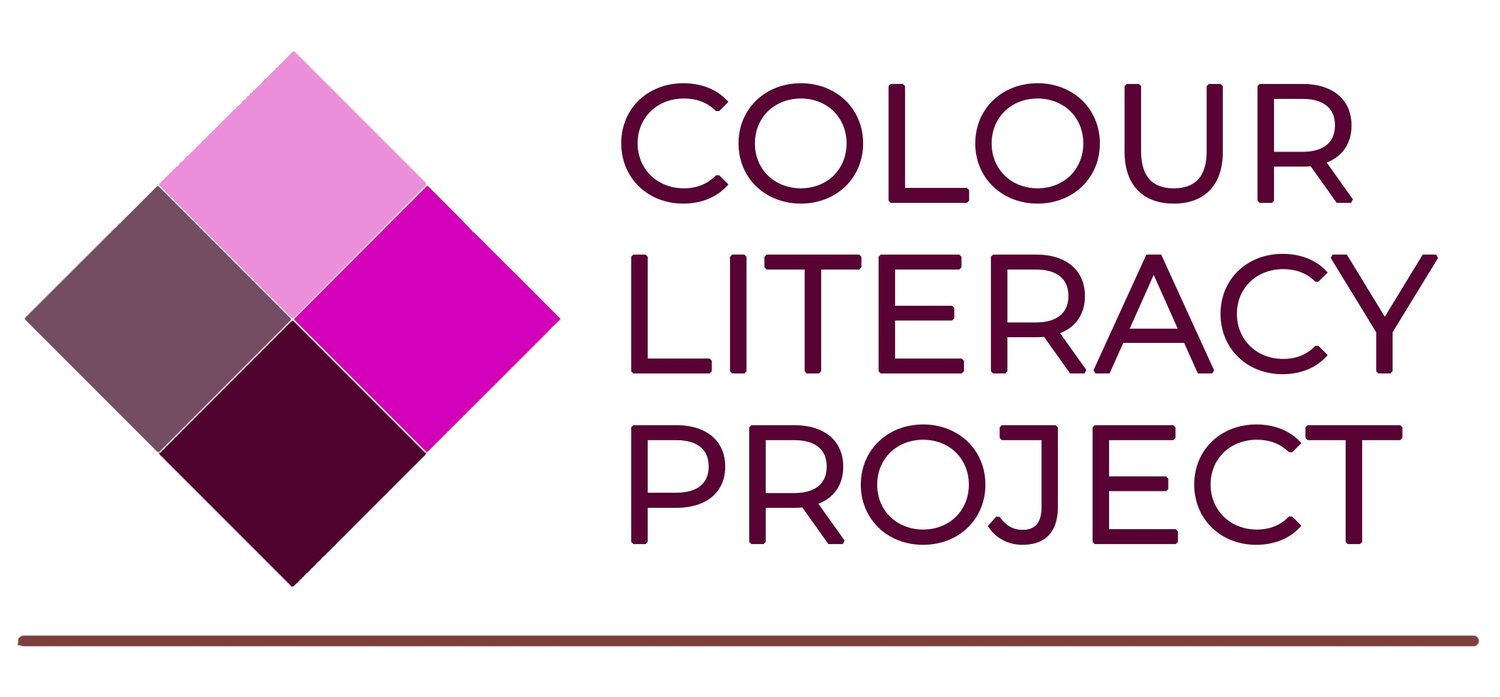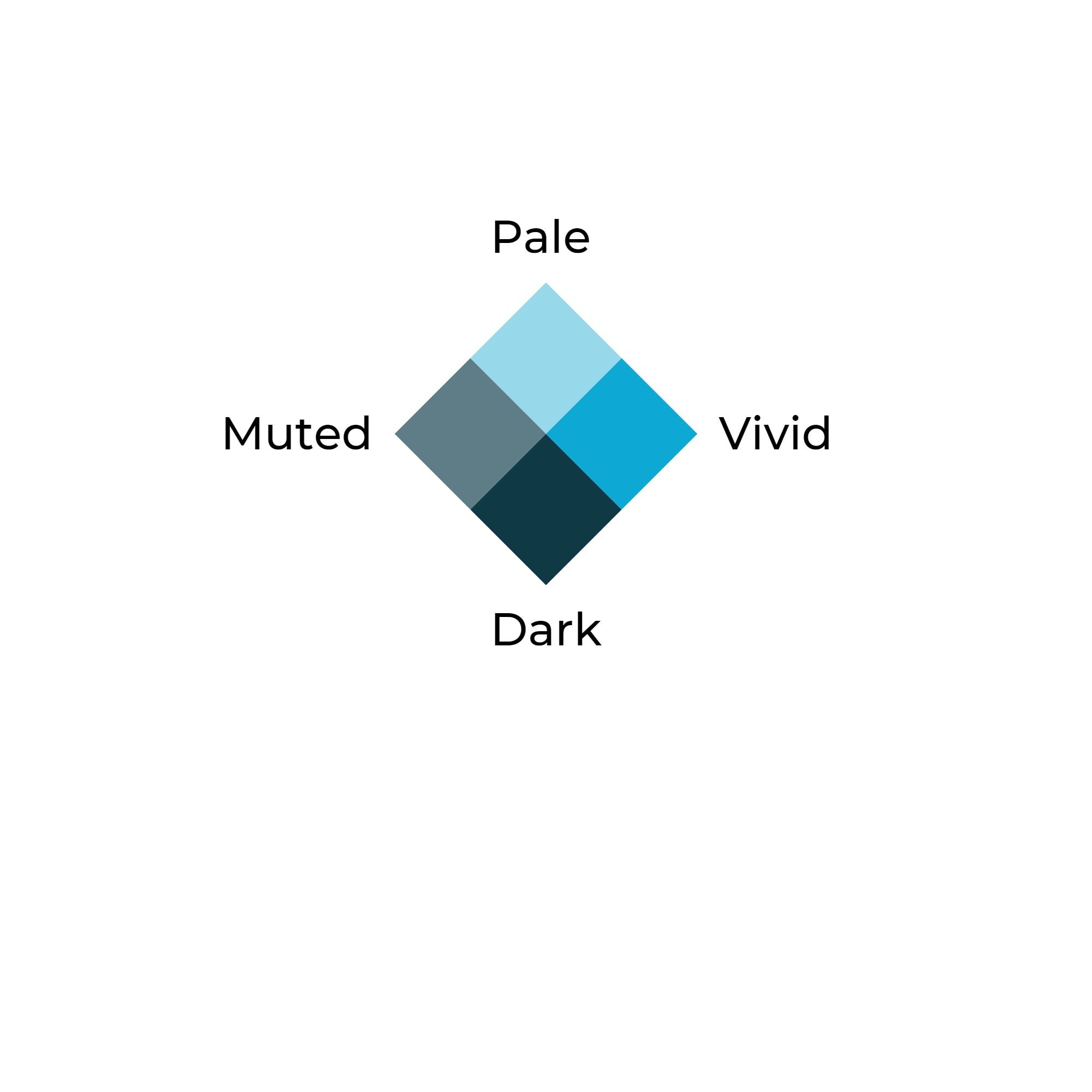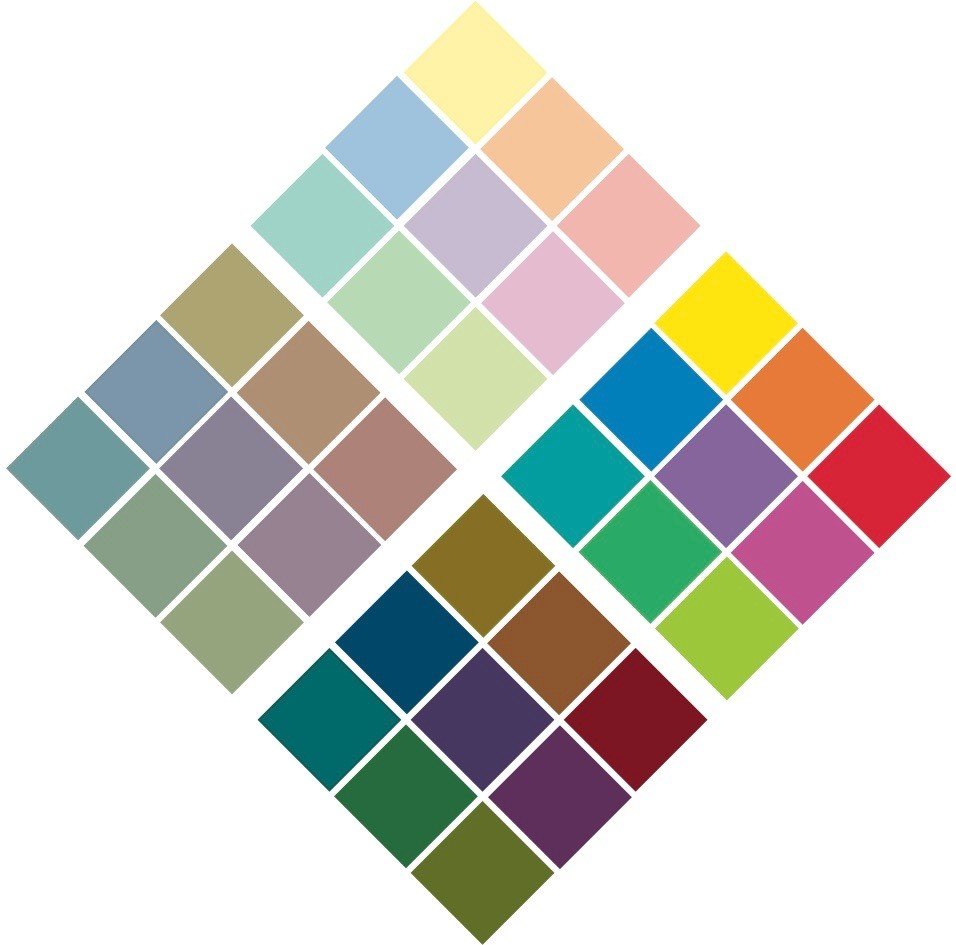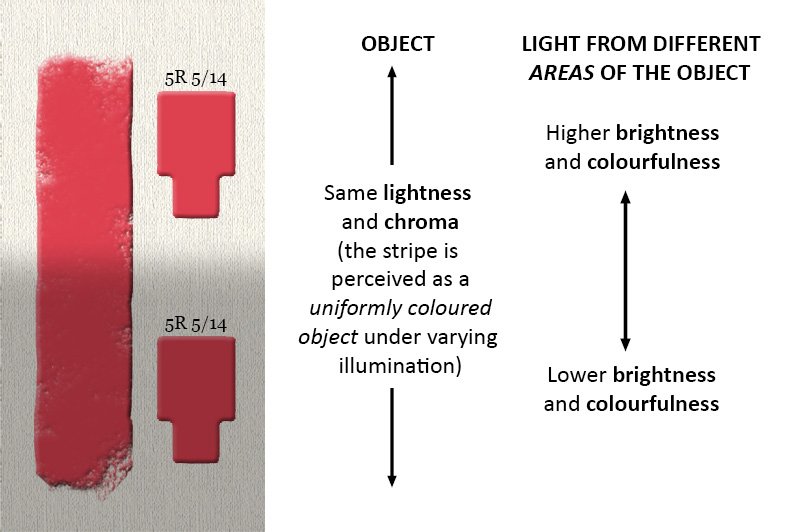Colour attributes
Several broad categories which are used to sort, order and describe a colour’s appearance. The terms character & hue family can be used to broadly describe a colour’s appearance. More specific sets of attributes include: hue, lightness/value & chroma; and hue, whiteness & blackness; and hue, brightness & colourfulness. Note that different systems or frameworks for colour categorization may use different but related concepts to specify the various colour attributes (e.g. chroma and saturation are related concepts, but do not mean exactly the same thing).
Simple definition: Words that we can use to completely describe how colours appear.
Example: Although we may use the term ‘green’ to describe the colours shown in the large rectangle on the left, the visual quality of the green varies throughout the rectangle. The 3 squares at the bottom may be simply described as pale green, dark green and vivid green, or described in more detail using one of the sets of colour attributes.
Expanded discussion: available at David Briggs’ Glossary: Basic Colour Attributes
Hue family and character
The most straightforward introduction to colour attributes is introducing the terms hue families and characters. Even young preschool children can grasp these concepts, and begin describing colours they see with these terms.
Hue Family
A group of colours that can all be categorized as having the same hue, no matter what their other colour attributes are. Each hue can be described with many variations: Vivid, Pale, Dark, Muted, etc. The figure on the left depicts a useful introductory set of nine hue families, which are clearly differentiated, familiar and easy to name.
Character
Character is a term for the aspect of a colour, in addition to its hue (or hue family), used to fully describe its appearance. Colours can be grouped in broad categories, such as pale, dark, muted, and vivid.
Hue, lightness/value and chroma
<div id="hue"></div>
Hue circle from the NCS colour system.
Hue
Hue is one of the perceptual attributes of colour, and is the quality by which we distinguish one colour from another, i.e. red, yellow, orange, green, blue, magenta, etc.
A colour’s hue is found by determining the most similar colour in the continuous circuit of vivid colours passing through red, yellow, orange, green, blue, magenta, and their intermediate colours.
Note that sometimes the term ‘colour’ and ‘hue’ are used interchangeably, but hue is only one of colour’s attributes, and is not enough to fully describe a colour’s appearance. See the common misconception that discusses why colour and hue do not mean the same thing.
Note that the most vivid example of a hue is often chosen to represent the hue, although all members of a hue family will have the same hue. Also note that it is preferable to refer to hues in plural – there is not a single red hue but rather many red hues. Finally, note that colours have hues; colours are not hues.
Figure A depicts a painting in full colour, and Figure B shows the lightness level or value information, leaving the hue and chroma information in Figure C. From: David Briggs’ Figure 1.3.1 http://www.huevaluechroma.com/013.php
Lightness/value
The attribute of colour which describes how light or dark a colour looks, compared to for example the greyscale which runs from light (white) to dark (black). It is used to describe coloured objects rather than coloured lights.
Simple definition: Ways to describe how light or dark a colour appears.
Expanded discussion: Available at David Briggs’ website The Dimensions of Colour: Lightness
The swatches on the left have higher chroma than the ones on the right.
Chroma (related terms: saturation, purity, intensity)
A measure of the vividness of a colour, judged relative to an achromatic grey of the same lightness/value.
Chroma is related to the terms saturation and purity, used in some colour ordering systems, but does not mean precisely the same thing. From the Greek khroma, colour. Note that the term ‘colourfulness’ is often used to describe the vividness or chroma of a colour in everyday language. However, the term ‘colourfulness’ has a precise definition as a formal scientific concept (see below).
Simple definition: How vivid or muted a colour looks. (Or, how close to a grey of the same lightness a colour looks.)
Expanded discussion: Available at David Briggs’ website – The Dimensions of Colour: Chroma
HUE, Whiteness and blackness
Hue
See definition above.
Whiteness
The degree of resemblance to the perception of pure white.
Blackness
The degree of resemblance to the perception of pure black.
Hue, Brightness and colourfulness
This set of attributes is used to describe the appearance of coloured lights reflected or emitted from objects.
Hue
See definition above.
Brightness
The perceived amount of light emitted, transmitted or reflected by an object.
Example: In the red-coloured stripe on the left, the top of the stripe appears brighter than the bottom of the stripe. The top of the stripe appears to reflect more light than the bottom of the stripe. However, the set of colour attributes of the stripe specified by its hue, lightness and chroma, is the same throughout the stripe.
Note that the term ‘bright’ is a term often used in everyday language to refer to the vividness or vibrancy of a colour, however the term ‘brightness’ has a precise definition as a formal scientific concept, as given here.
Colourfulness
The perceived chromatic intensity or vividness of the light emitted, transmitted or reflected by an object.
Example: In the red-coloured stripe on the left, the top of the stripe appears more colourful than the bottom of the stripe. However, the set of colour attributes of the stripe specified by its hue, lightness and chroma, is the same throughout the stripe.
Note that the term ‘colourfulness’ is often used to describe the vividness or chroma of a colour in everyday language. However, the term ‘colourfulness’ has a precise definition as a formal scientific concept, as given here.
Learn even more about colour attributes
For more on the colour attributes of hue, lightness (or value) and chroma, as well as brightness, colourfulness, saturation, blackness and brilliance see David Briggs’ video discussing The Elements of Colour











